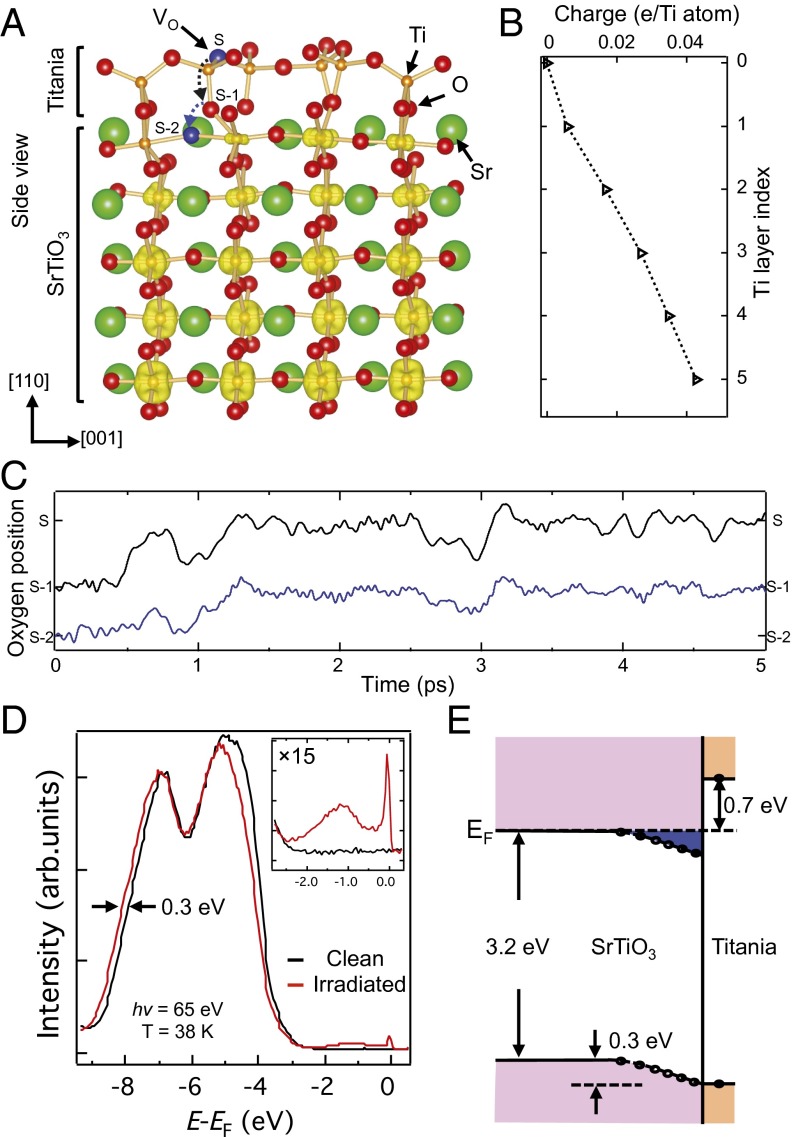Fig. 1.
SrTiO3(110)-(4 × 1) surface. (A) Structural model; an oxygen vacancy (VO) formed at the reconstructed surface spontaneously migrates to the (SrTiO)4+ plane beneath the top titania layer. The excess electrons from the VO form a 2DEG confined within a region of about 2 nm thickness. The layer-dependent charge is represented by the yellow lobes and plotted in B. (C) MD simulation of the VO diffusion from the surface (S) to the subsurface (S-2) sites represented by the accompanying upward oxygen migration from S-2 to S-1 (blue line) and from S-1 to S (black line). (D) Angle-integrated photoemission spectroscopy of the clean surface and after creating VOs by synchrotron radiation. An in-gap state and a metallic peak near the Fermi level (EF) develop (Inset). (E) Schematic band structure at a surface with VOs; the bands bend downward by 0.3 eV as deduced from the spectra in D. The dots denote the surface potential obtained from the shift of Ti 3s states in DFT+U calculations.

